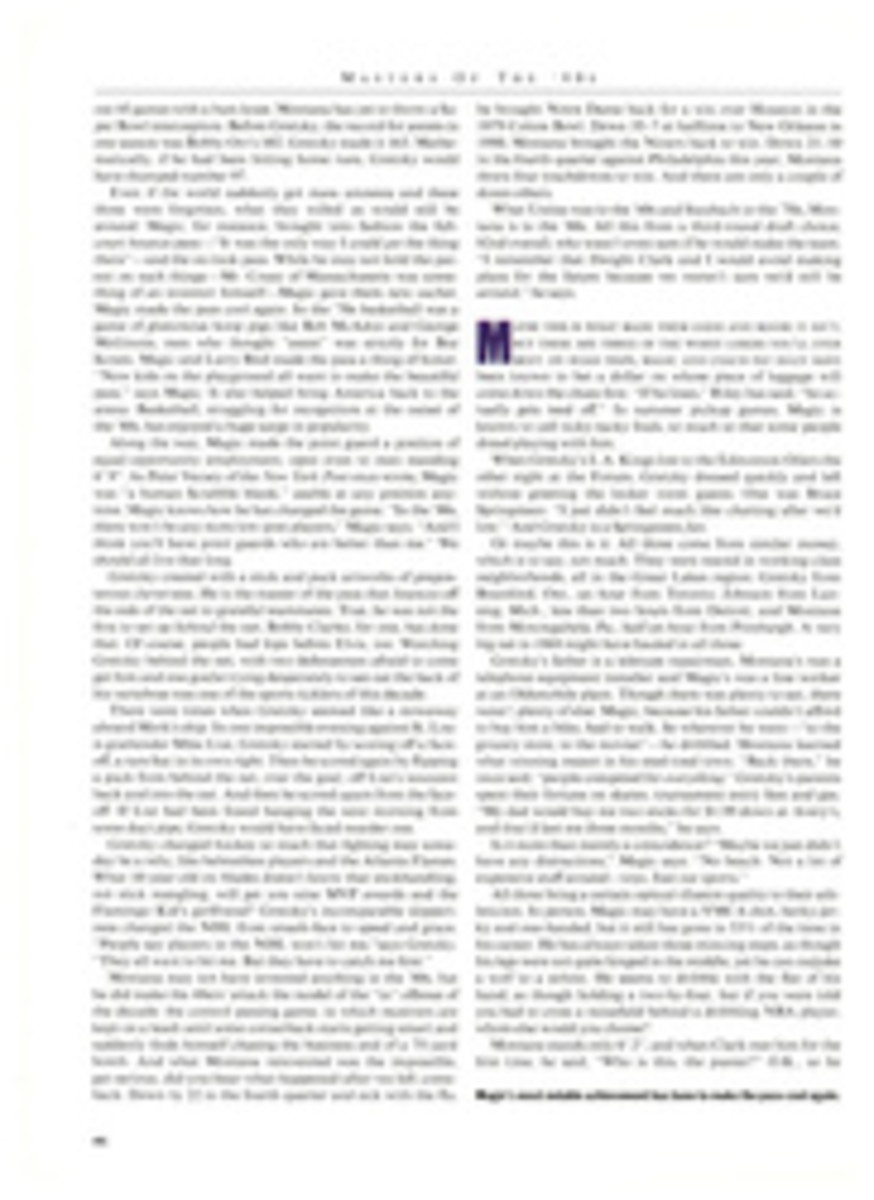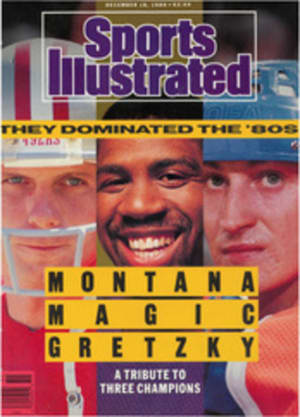
SKY PRINCESS PASSES ON HER SCEPTER
When Dorothy Hester Stenzel was 17, in 1927, she was a shy blue-eyed blonde who had a way with a biplane. At 21 she was barnstorming the Midwest and Southwest, performing aerobatics at air-shows for huge crowds that were starved for entertainment during the Depression. She was billed as Princess Kick-a-Hole-in-the-Sky, and her specialty was the outside loop—a wide, circular forward roll, pleasing to the eye but hard on the plane and pilot because of powerful G forces. At an airshow in Omaha on May 17, 1931, with 20,000 people looking up, Stenzel cut 69 continuous outside loops and established a record of 62—seven of the loops weren't deemed perfectly shaped and therefore weren't counted. For two hours and six minutes she traced giant circles over and over in the blue Nebraska sky. Hanging upside down in the open cockpit, Stenzel worked the stick with one hand and the wobble pump, which kept the fuel flowing when the plane was upside down, with the other. According to the Omaha World-Herald, when she landed safely, "there was an audible sigh of relief from the crowd."
"If I hadn't been able to fly, I would have been a dancer," says Stenzel, now 79 and living in Portland, Ore., where she grew up. "It was so natural for me to fly, to fly high. I was so at home, so relaxed; it wasn't really tough. There were an awful lot of accidents, but I never thought about getting hurt. I was a piece of that airplane. I could do some of those aerobatics with my eyes closed."
Her record, which was certified by the National Aeronautic Association (NAA), stood until July 13, 1989, when it was broken at the North Bend (Ore.) Air Show. Joann Osterud, 44, a United Airlines flight engineer and professional stunt pilot, flew her highly modified, high-performance biplane, Supernova, for 208 outside loops. Osterud would have quit at 200, but one of her favorite songs, Train Leaves Here This Morning, by the Eagles, was playing on her stereo headset in her enclosed cockpit, so she stayed aloft to hear the whole song. Three or four times during the two-hour, four-minute flight, she leveled off and flew discreetly into the clouds for a break. After clearing her head and blowing her nose, she racked up more of the loose, vertical ovals that drifted all over the sky on the windy, overcast day. Her record was certified by the NAA, whose chief observer, Susan Spargo, is the director of the airshow.
Stenzel has a weathered, rosy complexion, bright-pink finger-and toenails, and the handshake of a logger. Her mother died when Dorothy was nine, leaving her father with five daughters. She learned self-reliance early, and at 17 she worked her way through flying school by parachuting at local airshows. A standout student, Stenzel was taught aerobatics by the school's owner and director, Tex Rankin, who was well-known throughout the United States for his traveling airshows. From 1931 to 1934, Stenzel and Rankin flew their biplanes from Oregon to shows throughout the country. Then, in 1934, Stenzel married for the first time. She left the air-show, folded the flight school she had established a few years earlier in Portland and turned her attention to raising two daughters. Stenzel hasn't kept up her pilot's license, but occasionally she still gets out the old flying jacket and takes off with a friend.
Osterud, all of 5'3" and 100 pounds, also felt the urge to fly early in her life. At the age of two, she says, she knew she wanted to fly. She waited, though, until she had earned a degree in political science from Reed College in Portland before she took lessons, and when she did, she was terrified. "I was your original white-knuckle flyer," says Osterud, "terrified and loving it at the same time." Her first job out of college was as the secretary and pilot for an Alaskan trucking company. Since then Osterud has pursued her flying education ambitiously, piloting everything from helicopters to vintage fighter planes. These days, she is a Boeing 727 flight engineer for United Airlines in Los Angeles. She flies three days of her choice each week for United and puts the rest of her time into Osterud Aviation Airshows, which is based in Oxnard, where she lives. Osterud performs around the country in her high-tech aerobatic biplane. It weighs less than 1,300 pounds and has a 230-horsepower Lycoming engine with a nitrous oxide injection system that can briefly and explosively double the power during vertical maneuvers.
Perhaps not surprisingly, it was Stenzel who recruited Osterud to break the outside-loop record. Stenzel had seen her perform at an airshow and was impressed. "I believed it was well past time the record was broken anyhow," Stenzel says. "She's a smooth flyer and I didn't think she'd pull her wings off. Her plane is pretty special, but you can tear any airplane apart if you're rough on it."
Last spring, Osterud Aviation Airshows mailed out press kits and releases announcing the record attempt. Individual loops were sponsored by contributions, and $1,364.67 was raised for United Way of southwestern Oregon. The attempt was scheduled for the Thursday before the weekend airshow in North Bend, a town situated on the notoriously overcast Oregon coast. A low gray ceiling lingered until the afternoon, and a north wind blew chilly ocean air over the airport. Around 2:00, when the ceiling finally rose to 2,200 feet, Osterud took off, racing to get the record on the books. She was forced to compress her loops to 800 feet, half their normal diameter, as the weather worsened and the ceiling dropped. The loops were further deformed by the wind, as twice Supernova drifted off course and out of sight behind low clouds. The engine buzzed as the plane climbed and then zoomed down the back side of the loops it had described, the chunky aircraft silhouetted against the gray sky like a cross. As for leveling off and taking breaks to clear her swelling sinuses, Osterud had been advised by the NAA that as long as the number of minutes she used in attempting to break the record did not exceed the number of loops she completed, a few rest periods would be permitted. Her total of 208 outside loops also smashed the unofficial men's record of 180, set by Hal McClain of Houston in the early '80's. (Although the NAA has no record of McClain's feat, Osterud kept it in mind when she decided to continue doing loops once she had broken Stenzel's record.)
Stenzel, who was grand marshall of the airshow, was disappointed that her record had been broken under seemingly less stringent NAA requirements, but she was gracious nonetheless. And anyway, she still has her snap-roll record.
Two days before she set her outside-loop record in 1931, Stenzel had done 56 inverted snap rolls. This decidedly hairy maneuver is executed while flying along upside down; the snap is a sudden 360-degree roll, a movement that has been known to rip the wings off. Fox Movietone News filmed one of Stenzel's rolls from her cockpit, but the footage was never released. She says that film editors at Fox told her it would make people dizzy. Says Osterud, firmly, "The inverted snap roll is a very difficult, violent maneuver. I would only try it with the right plane."
But Stenzel did it, without really giving it a thought. "My airplane was quick and fast, a real sweetie," she recalls. "You can do most anything to an airplane if you do it smoothly, and that's one thing I knew how to do. Snap rolls aren't easy, and they aren't very popular among pilots. I believe that's one record that will endure."
PHOTO
NYT PICTURES
In the early '30s, Stenzel was the daring darling of airshows throughout the country.
PHOTO
GEORGE OLSON
Stenzel remains snap-roll ace.
PHOTO
K.L. OSTERUD
Despite gusty winds, Osterud's trusty plane carried her to a record 208 outside loops.
PHOTO
GEORGE OLSON
Osterud soared with the Eagles.

